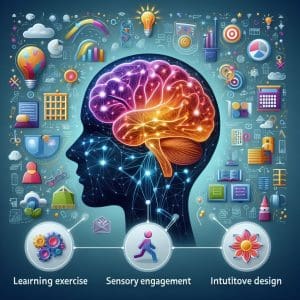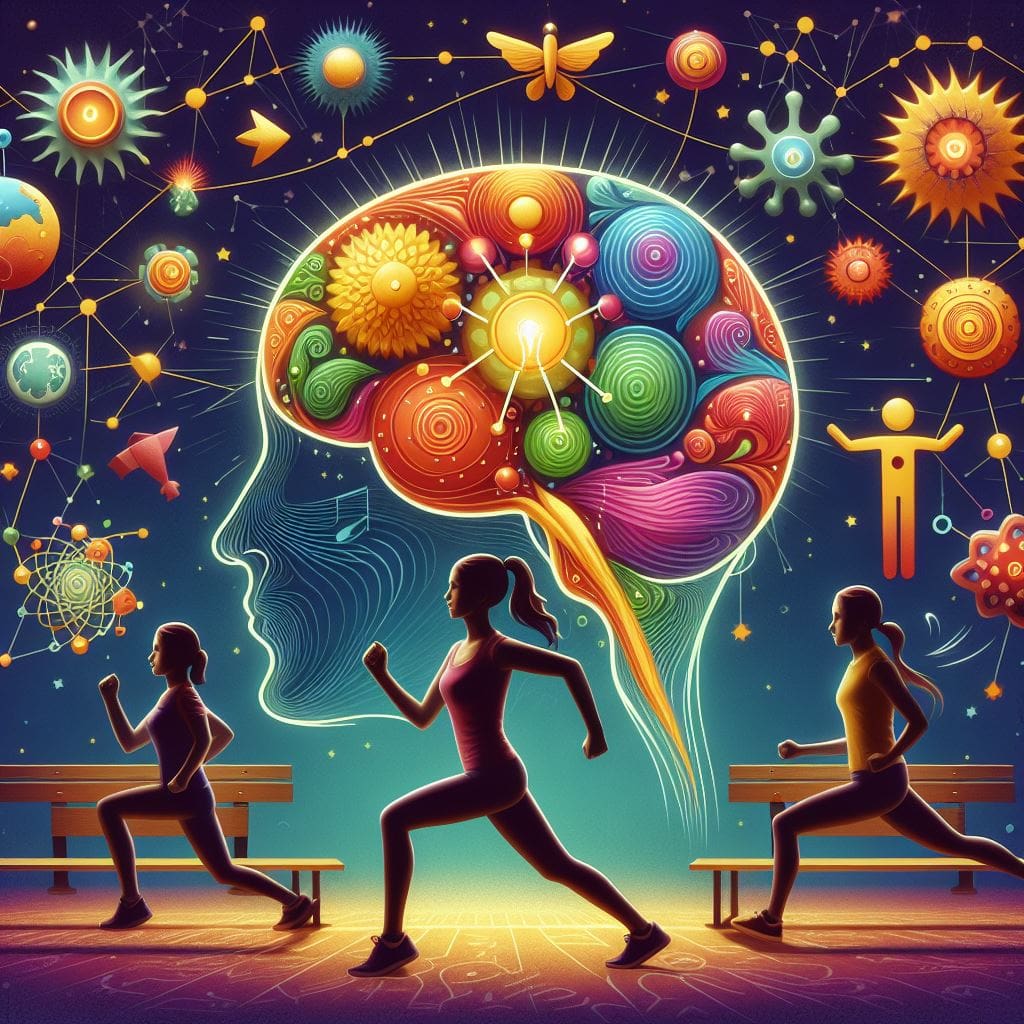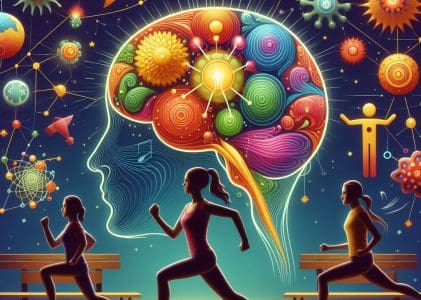Listen to the story
Our senses are gateways to experience, constantly bombarding our brains with information. Brain-adapted learning capitalises on this sensory richness. By incorporating sight, sound, touch, and even smell into the learning process, we create a more immersive and memorable experience. This aligns with the research of Torkel Klingberg, who emphasises the benefits of activating “multimodal areas” in the brain. Imagine dissecting a frog in biology class, the visual and tactile experience adding depth to the textbook diagrams. Or imagine learning a new language through interactive games that incorporate sounds, images, and even the physical act of speaking. By engaging multiple senses, we create a richer tapestry of knowledge that is more readily assimilated and retained. The ideal learning environment should feel inviting and intuitive, much like a well-designed building. Just as you wouldn’t need a map to navigate in a building, learners shouldn’t struggle with cumbersome interfaces or confusing layouts. The focus should be on exploration and discovery, not technical hurdles. This aligns with the growing trend of user-centred design in education, where educators and content experts prioritise intuitive interfaces and seamless user experiences. Imagine a virtual reality history lesson that transports you to ancient Rome, allowing you to explore the Colosseum firsthand. Or picture a science app that lets you manipulate virtual molecules, fostering a deeper understanding of their structure. These intuitive environments empower learners to navigate content effortlessly, transforming them from passive consumers to active explorers. By incorporating these three elements – physical exercise, multi-sensory engagement, and intuitive design – we can create a learning experience that is not only more effective, but also more engaging and enjoyable. By integrating these principles, educators can unlock the full potential of the human brain, fostering a lifelong love of learning that empowers individuals to reach their full potential. Written by Learning Designer and developer of SOE PublishingLabThe Body-Mind Connection: Why Exercise Fuels Learning
 The human brain is not a static organ; it thrives on stimulation and adaptation. Research, as highlighted in Anders Hansen’s book “Hjärnstark” (Brain Strength), demonstrates a clear connection between physical exercise and enhanced learning. Exercise strengthens various brain regions, including those responsible for information processing and memory. This translates to improved concentration, sharper focus, and a heightened ability to retain knowledge. Studies further reveal a positive impact on creativity, making learning not just more effective, but also more engaging. Imagine tackling a challenging concept after a brisk walk – your mind is alert, your memory primed, and you’re ready to conquer new knowledge.
The human brain is not a static organ; it thrives on stimulation and adaptation. Research, as highlighted in Anders Hansen’s book “Hjärnstark” (Brain Strength), demonstrates a clear connection between physical exercise and enhanced learning. Exercise strengthens various brain regions, including those responsible for information processing and memory. This translates to improved concentration, sharper focus, and a heightened ability to retain knowledge. Studies further reveal a positive impact on creativity, making learning not just more effective, but also more engaging. Imagine tackling a challenging concept after a brisk walk – your mind is alert, your memory primed, and you’re ready to conquer new knowledge.Engaging the Symphony of Senses: A Multimodal Approach to Learning
Designing for Learning: Intuitive Design Foster Exploration
Conclusion: A Symphony of Learning
LarsGoran Bostrom
Learn more about interactive books with gamification from SOE PublishingLab Makerspace – four video presentations – click below
Information from B-InteraQtive Publishing

We offer a wide range of services, including:
- Counselling: We can help you assess your needs and develop a plan for your digital learning project.
- Development: We can create custom digital learning experiences that meet your specific goals.
- Knowledge management: We can help you improve your organisation’s knowledge management practices.
- Interactive books: We can create interactive books that engage and motivate learners.
Click here for more information
Opens in a new tab




